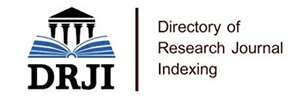
Journal Basic Info
- Impact Factor: 1.995**
- H-Index: 8
- ISSN: 2474-1647
- DOI: 10.25107/2474-1647
Major Scope
- Gynecological Surgery
- Obstetrics Surgery
- Orthopaedic Surgery
- Vascular Surgery
- Emergency Surgery
- Plastic Surgery
- Neurological Surgery
- Transplant Surgery
Abstract
Citation: Clin Surg. 2021;6(1):3154.Case Series | Open Access
Involvement of Adenomyosis in Refractory Abnormal Uterine Bleeding-Ovulatory Dysfunction: A Case Series
Gui T1 , Deng S1*, He Y2 and Xue H2
Department of Obstetrics and Gynecology, Peking Union Medical College Hospital, Chinese Academy of Medical Sciences, National Clinical Research Center for Obstetrical and Gynecological Diseases, Beijing, China 2 Department of Radiology, Peking Union Medical College Hospital, Chinese Academy of Medical Sciences, Beijing, China
PDF Full Text DOI: 10.25107/2474-1647.3154
Abstract
Objective: To report six cases of refractory AUB-Ovulatory Dysfunction (AUB-O) diagnosed with adenomyosis and to emphasize the clinical significance of adenomyosis in AUB. Methods: This was a retrospective study conducted at the Peking Union Medical College Hospital. Between September 2016 and July 2018, six patients with refractory AUB-O were admitted. Refractory AUB was defined as insensitivity to hormone therapy after exclusion of endometrial malignancy. Ultrasound, curettage, and pelvic Magnetic Resonance Imaging (MRI) were performed. Results: According to MRI, the six patients with AUB-O were classified into either asymmetrical internal adenomyosis or symmetrical internal adenomyosis. In the first group, a diagnosis of adenomyosis was made by ultrasonic images of thickened uterine walls with palisade echoes. MRI further revealed alveolate foci oppressing the endometrium and protruding into the uterine cavity (?Swiss cheese? signs). In the second group, ultrasound and pathological examination did not provide positive findings after hysteroscopy, while MRI presented diffuse thickening of the junctional zone over 50% of the thickness of the myometrium, and the diagnosis of adenomyosis was then established. In these cases, GnRHa was the only guaranteed drug to control acute vaginal bleeding. Conclusion: When routine medications are ineffective in the treatment of AUB-O, adenomyosis is most likely the underlying reason, even for patients without dysmenorrhea. Given that adenomyosis has different subtypes, MRI is an optimal method to make a diagnosis and to guide individual treatment, especially for cases in the early stages.
Keywords
Refractory; Abnormal uterine bleeding; Ovulation dysfunction; Adenomyosis; Ultrasound; MRI
Cite the article
Gui T, Deng S, He Y, Xue H. Involvement of Adenomyosis in Refractory Abnormal Uterine BleedingOvulatory Dysfunction: A Case Series. Clin Surg. 2021; 6: 3154..













